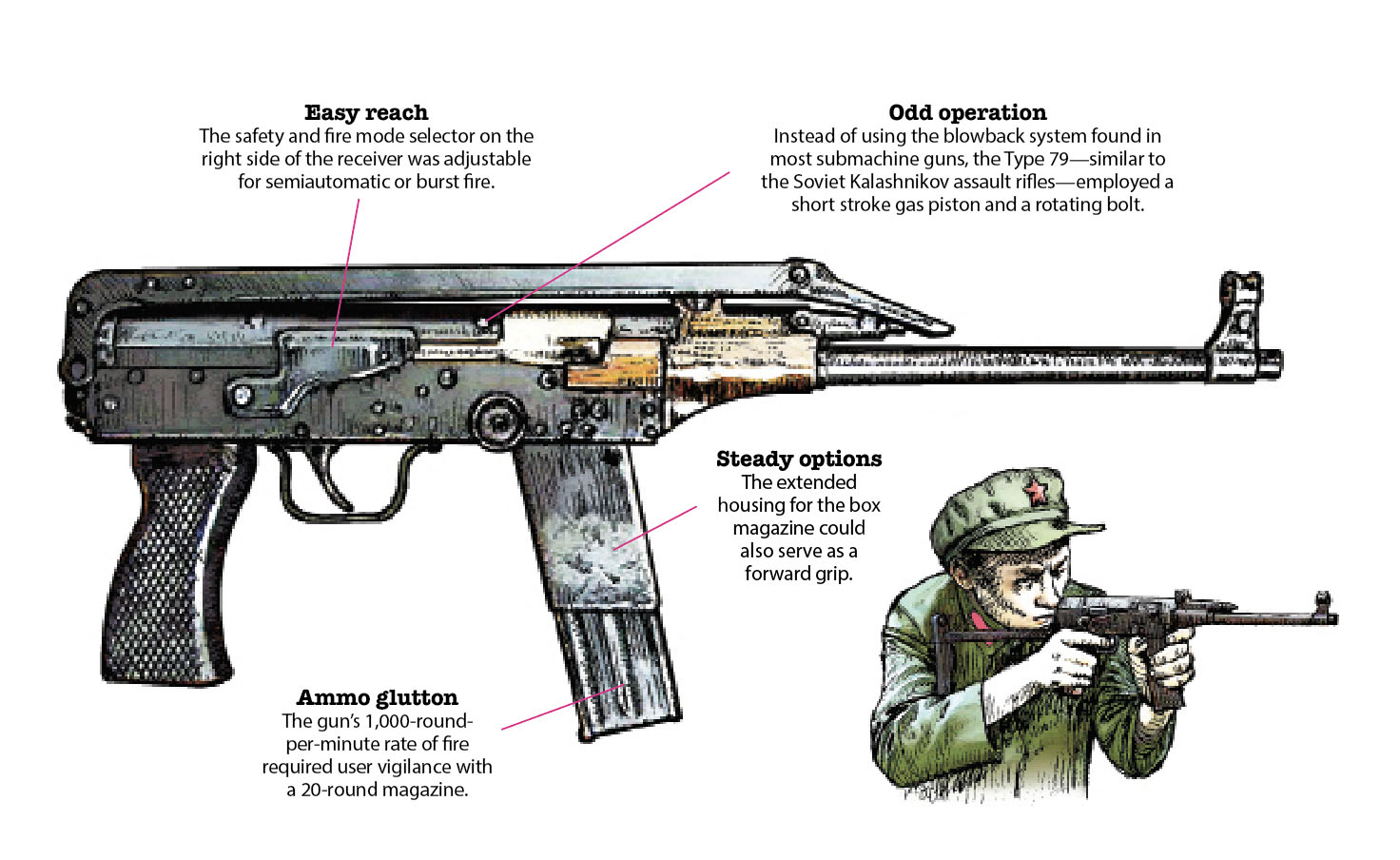The wars in Indochina were fought with a dizzying array of international weaponry, ranging from homemade Viet Cong pistols and rifles to mammoth U.S. “Daisy Cutter” bombs capable of creating widespread destruction. Among the weapons to see combat in Vietnam was the Chinese Type 79 submachine gun, unfamiliar to most Americans because it was fought in a different Vietnam war—one waged between erstwhile allies Vietnam and China after U.S. forces left.
On Feb. 17, 1979, the Chinese sent some 200,000 troops into Vietnam in response to the Vietnamese invasion of Cambodia to overthrow Pol Pot’s Chinese-allied Khmer Rouge government. Another sore spot was the Vietnamese seizure of the Spratly Islands, a contested archipelago.
That war was the first test for the Chinese 1979 Nianshi Chongfeng Qiang (1979 year type submachine gun). The gun’s introduction also coincided with a falling out between China and the Soviet Union, which traditionally licensed weapons for Chinese production.
Seeking to create a submachine gun for military and police use, the 208th Research Institute of China Ordnance Industry began development of the weapon in 1970. Torture tests in 1971 and 1975 necessitated complete redesigns, largely because the chamber could not handle the pressure of its steel-cored 7.62 mm Tokarev Type 51 bullet. Ultimately the committee produced a compact, lightweight gas-operated weapon adjustable for semiautomatic or burst fire, with a folding stamped metal stock. Type-classified in 1978, the weapon entered preliminary production in 1979.
The Type 79 was intended for jungle operations. The first guns were used during the incursion into Vietnam, which ended with China’s withdrawal on March 16. The limited numbers of Type 79s were used primarily on reconnaissance patrols. The 1979 war and intermittent border clashes with Vietnam until 1989 provided ample combat evaluations. A series of improvements led to mass production in 1981. More than 200,000 were produced before cessation in 1992. V
This article appeared in the June 2021 issue of Vietnam magazine.






